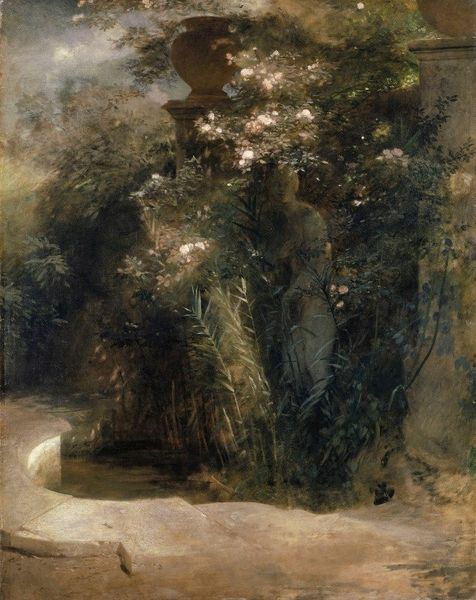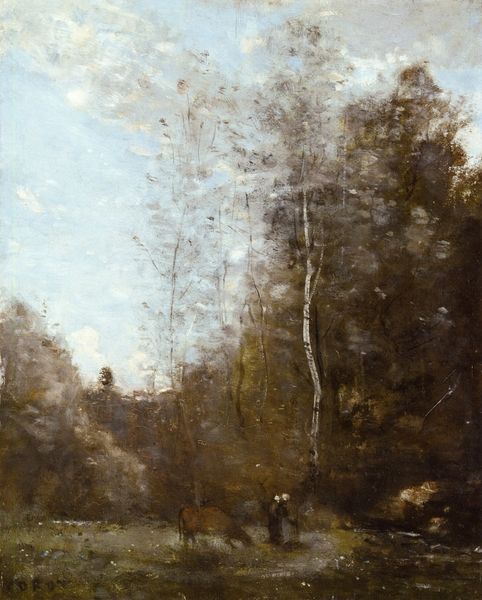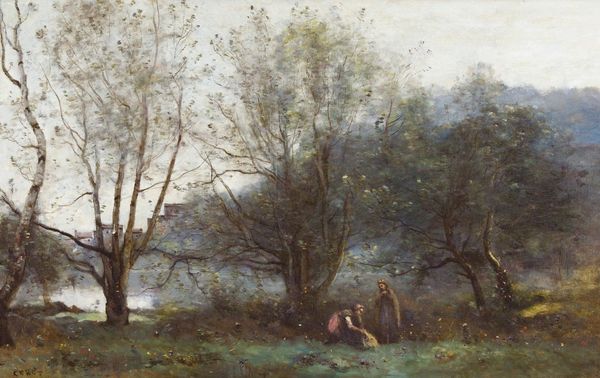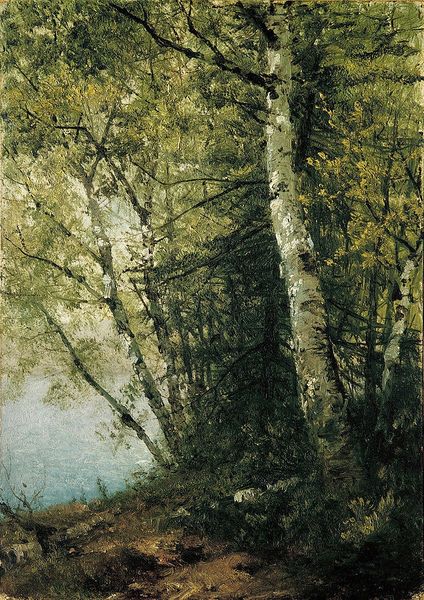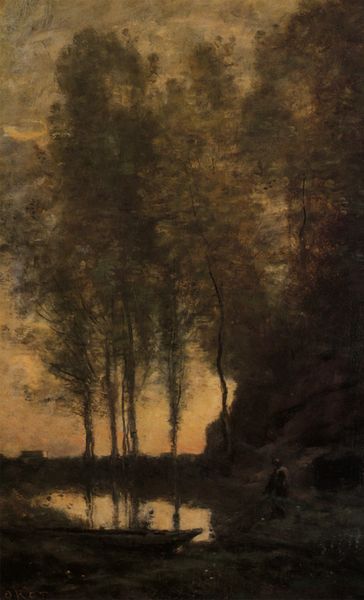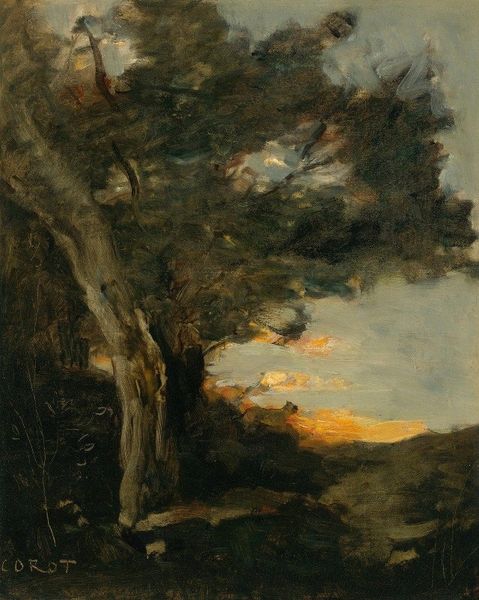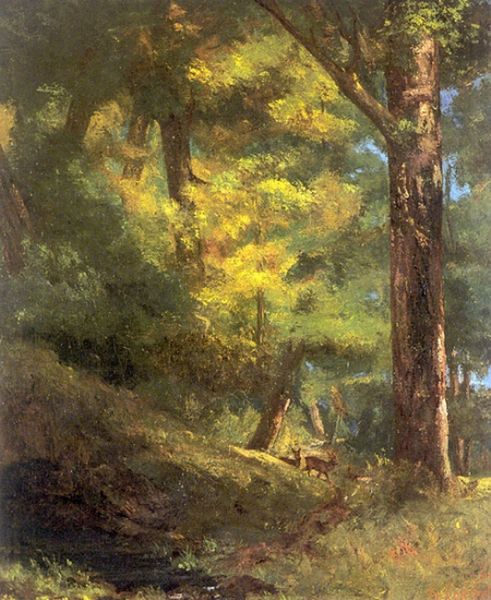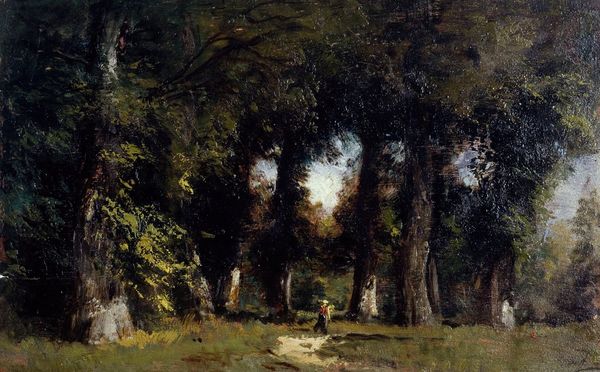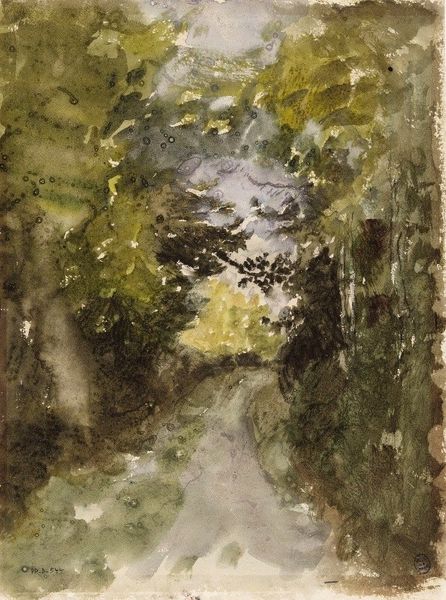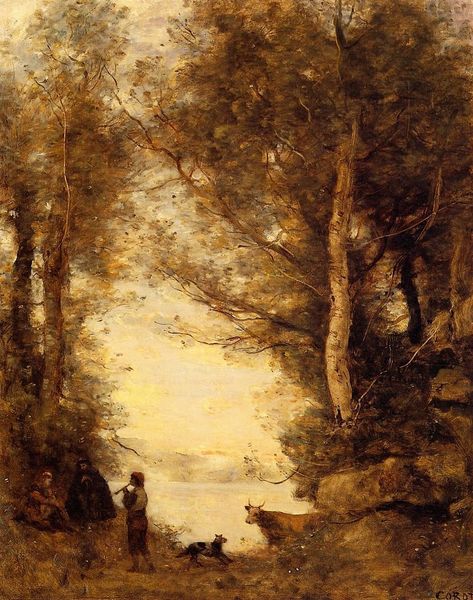
Dimensions: 22.2 x 15.9 cm
Copyright: Public domain
Editor: This is "The Lac de Nemi," painted by Camille Corot in 1845. It's an oil painting. The first thing that strikes me is the sense of almost dreamlike isolation with the lone figure entering this wood. What do you make of it? Curator: It’s interesting you mention isolation. Consider Corot's positioning in 19th-century French art. The establishment favored large-scale history painting. Corot, however, championed the more personal landscape, particularly "en plein air" studies. Do you see how this move away from academic standards reflects broader social shifts of the time? Editor: I think so. A move towards more personal experiences and away from grand historical narratives. Curator: Exactly. And observe how he flattens the picture plane. There's a democratizing effect. Corot subverts traditional hierarchies, elevating the seemingly simple act of observing nature. Where previously only grand events were the subject of fine art. Notice, also, how Corot is moving toward—but not yet fully embracing—Impressionism. How might a painting like this influence later artistic movements that question art's role in society? Editor: I see what you mean! By focusing on light and personal experience, he kind of paved the way for the Impressionists to challenge academic norms even further, making art more accessible, and showing the beauty in everyday scenes rather than just historical or mythological subjects. Curator: Precisely. So, perhaps "isolation" is less about solitude, and more about challenging institutional norms. The art world slowly started shifting towards representing a collective experience. Editor: That makes me look at it totally differently. The lone figure feels less alone now and more… rebellious. Curator: I agree. Examining art through a socio-political lens can reveal surprising perspectives. Editor: Thanks! This has really given me a lot to consider.
Comments
No comments
Be the first to comment and join the conversation on the ultimate creative platform.
